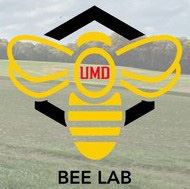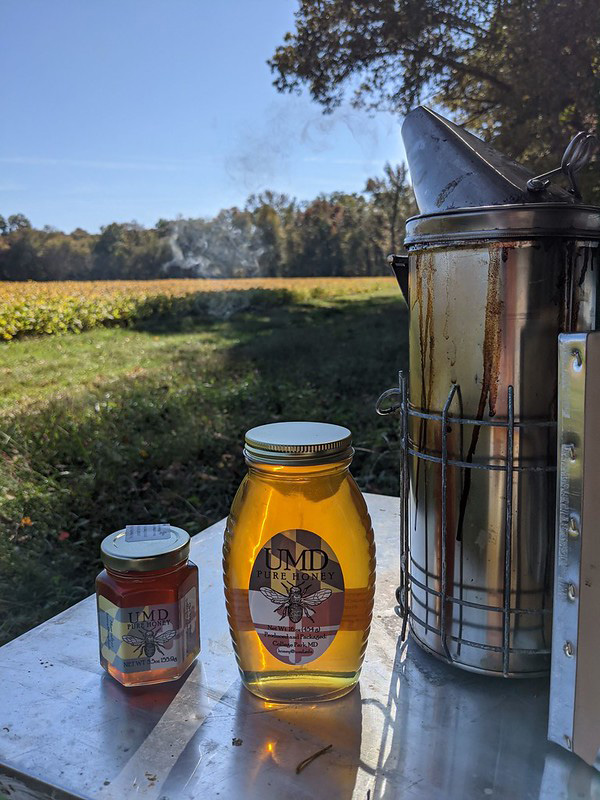'ROOTS IN RESEARCH' Newsletter
CMREC - Beltsville Facility - Yield Year 2022
We are proud to present you with the first edition of a series of annual newsletters showcasing the diversity of applied research and hands-on educational programming that happen at the University of Maryland Research and Education Centers across the state. These facilities provide a living-laboratory space to carry out research addressing the real-world problems facing our farmers from issues like invasive species, climate change, economics, and environmental
conservation. The information produced from these research projects is shared with the scientific community and directly to the public through journal articles, extension newsletters, and many other formats, but compiling summaries of all of the work done at each facility in one publication here gives a snapshot of how many projects are carried out at each research farm every year. Here, we have compiled reports on the 2022 projects at the Central Maryland Research and Education Center (CMREC) in Beltsville. CMREC-Beltsville is only a short drive from College Park, and so this facility tends to attract a range of faculty from campus. This facility is located on land that is a part of USDA’s Beltsville Agricultural Research Center, and has been leased as a partnership between USDA and UMD. This ongoing agreement has helped to foster collaboration between USDA and MDA researchers over the years, including some of the work that was carried out in 2022. We hope you enjoy reading about the breadth of different projects, and gain some insight on the value of the work carried out at the RECs each year.
_________________________________________________________________________________________________________________________________________________
Beltsville Weather Station
Weather data for Beltsville is displayed on our website. The information can be displayed by month, or by the year in a printable format. To compare weather data averages by the month or year, check out our website! If your research requires this data in a different format, please contact Sheila Oscar (soscar@umd.edu) and he will help to get the information you are requesting.
_______________________________________________________________________________________________________________
Fundamentals of Soil Science Course - Catena in the Field
Eni Baballari - Environmental Science and Technology, UMD
Every semester, students of ENST200, Fundamentals of Soil Science, take the drive to the Central Maryland Research and Education Center (CMREC) - Beltsville Facility to study soils in the field. During this field trip, curious students of soils use augers to dig deep into the many layers of soil, called horizons. They get soil from four different locations, representative of the local topography. They deposit their diggings into a trough and come together with their soil troughs from four locations to see them side-by-side and discuss differences between them. They talk about the 5 soil formation factors (parent material, climate, organisms, topography, and time) and how each of these has influenced the local soil. Importantly, they also talk about the influence that soil properties have on the land use capabilities, such as farming or installation of a septic tank field. Students love this trip and we look forward to continuing to showcase the wonder of soil! Photo: Teacher and students pose for a photo with their soil profiles in white troughs in front of them.
___________________________________________________________________________________________________________________________________
Eco-evolutionary Dynamics of Age-specific Resistance
Samuel Slowinski, Allyson Kido, Andrea Shirdon, Emily Bruns (Dept of Biology UMD, College Park)
Mature plant resistance is a well-known phenomenon in many crop species. Older plants tend to have a higher level of resistance, and better tolerance of pathogens than young seedlings. This pattern is not restricted to crop species, but also occurs in wild plants, as well as invertebrates and even vertebrates. Our lab is interested in how these patterns of age-specific resistance evolve in nature. Read more>>
___________________________________________________________________________________________________________________________________
Evaluation of Different Rates of Insecticide Plinazolin® Sc200 for Control of Fruitworms and Other Fruit-feeding Insect Pests in Staked Tomato Production
Galen P. Dively and Terry Patton - Dept. of Entomology, University of Maryland In cooperation with: Erin Hitchner - Research and Development Field Scientist, Syngenta Crop Protection
PLINAZOLIN® technology is the trademark of a new active ingredient that provides a novel mode of action that helps growers manage a range of resistant and difficult to control insect pests, through targeted spray programs. The University of Maryland has been working with Syngenta to determine the minimum dosage of the insecticide required to effectively control fruitworms, as well as to generate the necessary data required by EPA for product registration. Read more>>
___________________________________________________________________________________________________________________________________
Enhanced Cover Cropping for Nutrient Management - Two Fields
Ray Weil, Professor of Soil Science
Below are two videos showing no-till planting into a typical rye cover crop terminated in mid-April, 3 weeks before planting compared to an enhanced cover cropping practice of "planting Green" into a much bigger living multi-species green cover crop.
The enhanced cover crop promises to fight climate change and improve soil health by sequestering 4-5 times as carbon from the atmosphere into the soil, as well as reducing fertilizer needs by fixing 50 to 100 lbs. of nitrogen per acre.
Click here to view video 1 and video 2
___________________________________________________________________________________________________________________________________
UMD Bee Lab and the New UMD Bee Squad
https://www.umdbeelab.com/ https://umdbeesquad.com/
 About The Lab
About The Lab
The Honey Bee Lab at the University of Maryland has diverse personnel with multidisciplinary scientific backgrounds who bring a fresh perspective to solving problems. Research in the laboratory is focused on an epidemiological approach to honey bee health. We are proud to share our research into the major mechanisms that are responsible for recurring high loss levels in honey bee populations, such as pests and pathogens associated with honey bees, loss of natural forage habitat due to large monocultural croplands, and pressure from human induced changes in the environment.
Our team has led and managed the USDA APHIS National Honey Bee Disease Survey since 2009. We are also a major partner and founding member of the Bee Informed Partnership (BIP), who collaborates closely with beekeepers from across the country to study and better understand the loss in honey bee colonies in the United States.
You can find Realtime results about these efforts at our database portals: https://research.beeinformed.org/state_reports/. Click here to purchase UMD Honey
Donations
If you are able to help support our mission to improve honey bee health, we greatly appreciate whatever you can give.
You may donate online using the University of Maryland "Giving to Maryland" Honey Bee Lab Donation Site. Thank you for your support!
_________________________________________________________________________________________________________________________________
Grain Yield is Not Impacted by Early Defoliation of Maize: Implications for Fall Armyworm Action Thresholds
Carlos A. Blanco, Gerardo Hernandez, Giseli Valentini, Maribel Portilla, Craig A. Abel, Paul Williams, Urbano Nava-Camberos, William D. Hutchison, and Galen P. Dively
Abstract. The fall armyworm, Spodoptera frugiperda (J.E. Smith), now is arguably the most important global insect pest of maize, Zea mays L., in the world. Maize growers in the Americas have battled the pest for centuries, and control recommendations have been adapted for Africa and Asia, based on contrasting results of the impact on yield when the pest infests young maize plants. Read more>>
___________________________________________________________________________________________________________________________________
FACTSHEET DISEASE DATA 2022
Maryland Barley Varieties____________________________________________________________________________________________________
Impact of Cover Crop Termination Method on Soil Moisture
Cara Peterson, PhD Candidate, Dr. Kate Tully, Associate Professor, Agroecology Lab, Department of Plant Sciences and Landscape Architecture
Dr. Steven Mirsky, Research Ecologist, Sustainable Agricultural Systems Laboratory, Agricultural Research Service, USDA
To prepare for spring planting, farmers rely on mechanical (e.g., roller-crimping, mowing, tilling) and chemical methods to terminate their winter cover covers. Most growers using cover crops in conventional grain production systems terminate their cover crops in the spring by spraying broad spectrum post-emergent herbicides. Additionally, farmers in both conventional and organic production systems might roller-crimp their winter cover crop, effectively flattening the cover crop biomass into a mulch layer. Read more>>
___________________________________________________________________________________________________________________________________
Field Evaluation of the Efficiency of DDI Concentrate for Weed Control and Residual Activity
Galen P. Dively - Department of Entomology, University of Maryland, Josh Matta - i2LResearch USA, Inc.
An experimental field trial was conducted in 2022 at the Central Maryland Research and Education Center, Beltsville facility, to evaluate the efficacy of an experimental herbicide (DDI) for immediate burndown and residual weed control. Treatment plots were established along a 200 m farm lane with a mixture of weeds growing between the wheel tracks on a gravel+soil substrate and compared directly next to the lane with weeds growing on a soil substrate Read more>>
___________________________________________________________________________________________________________________________________
Sweet Corn Sentinel Monitoring Network
Galen P. Dively, Emeritus Professor, Department of Entomology
Bt corn and Bt cotton producing insecticidal toxins derived from Bacillus thuringiensis (Bt) are widely adopted in the U.S. to control lepidopteran pests, which have resulted in major benefits to growers and the general public. However, resistance evolution in corn earworm/bollworm (Helicoverpa zea) populations has become a major threat to the sustainability of these crops. Read more>>
___________________________________________________________________________________________________________________________________
Flower Power: Floral Diversity Attracts Beneficial Arthropods in an Edamame Agroecosystem
Kathleen Evans, Ph.D. Student, Anahí Espíndola, Assistant Professor, Cerruti Hooks, Professor Department of Entomology
Increased biodiversity within a habitat often enhances ecosystem services (e.g., pollination, natural enemy efficacy) and cropping systems are no exception. Studies show that crops benefit from diverse plant communities through enhanced services such as pest suppression, pollination and soil fertility. This helps explain why losses of natural habitat in agroecosystems and an associated reduction in floral diversity negatively affect beneficial arthropod populations while benefiting pests. Read more>>
___________________________________________________________________________________________________________________________________

